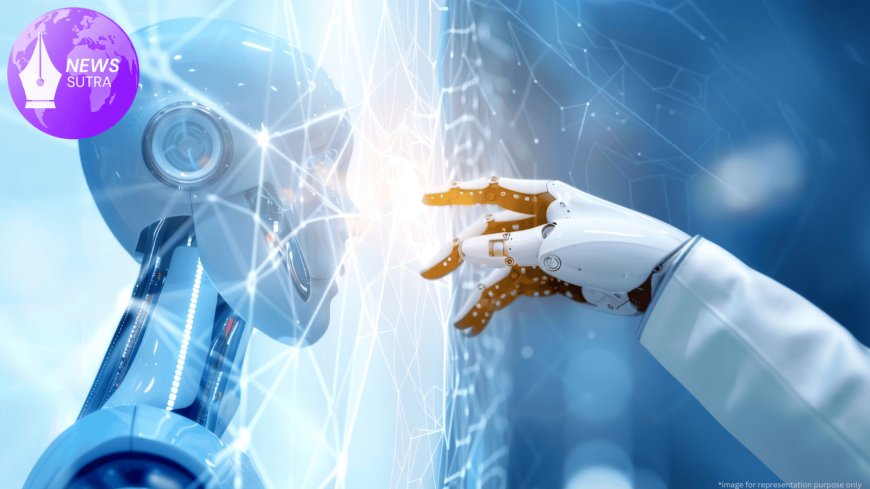Can AI Police Departments Reduce Crime Without Bias? The Debate Dividing American Cities
As AI-driven policing grows in U.S. cities, debate intensifies over crime reduction vs. bias. Can technology ensure safety without sacrificing civil liberties?

By Ronald Kapper | NewsSutra
Introduction: A Tipping Point in Modern Law Enforcement
As American cities search for new ways to combat rising crime rates, a controversial solution is gaining traction: AI-driven police departments. With cities like Chicago, New York, and Los Angeles quietly integrating artificial intelligence into their surveillance, dispatch, and patrol systems, a new debate has ignited — can these systems reduce crime without exacerbating existing bias? And more importantly, can safety be delivered without sacrificing civil liberties?
The question is no longer if AI will be part of modern policing, but how. As law enforcement agencies and tech firms accelerate collaborations, critics warn of potential misuse, algorithmic bias, and community distrust. Supporters argue AI can create faster response times, spot criminal patterns, and optimize officer deployment while reducing human error. The divide is growing, and the stakes are immense.
What Does an AI-Driven Police Department Look Like?
Imagine a police department where data flows in real-time from thousands of cameras, drones, sensors, and social media feeds. Algorithms flag “unusual” patterns, scan license plates, match faces with criminal databases, and even predict hotspots for crime based on historical data.
Companies like Palantir, ShotSpotter, and Clearview AI are already active in this space, partnering with dozens of local police forces. These systems promise improved decision-making, faster deployment, and better use of taxpayer money.
In Los Angeles, the LAPD uses predictive policing software to determine where to place patrols. In Detroit, facial recognition tools identify suspects from street cameras. In Chicago, the Strategic Decision Support Centers use machine learning to monitor gang activity and gun violence.
But with these tools come troubling questions about transparency, accuracy, and accountability.
The Bias Problem: Machines Trained on Flawed Data
Critics argue that AI doesn’t remove bias — it often amplifies it.
“The problem is, AI learns from historical data. And in policing, historical data is already skewed by decades of over-policing Black and Latino neighborhoods,” said Dr. Janelle Brooks, a sociologist at the Urban Justice Institute. “So you’re embedding systemic bias into software that appears neutral.”
This has already played out in Oakland, where an audit of predictive policing tools found the algorithm disproportionately sent officers to majority Black neighborhoods, even when crime reports were evenly distributed.
Facial recognition systems have also come under fire. A study by MIT revealed that facial recognition technology misidentifies people of color up to 100 times more than white individuals. In some cases, such as the Robert Williams case in Michigan, these false positives led to wrongful arrests.
Police Departments and Tech Firms Defend the Technology
Law enforcement agencies counter that the issue isn’t the technology itself — it’s how it’s implemented.
“We don’t just rely on AI for arrests or stops. It’s one tool among many,” said Captain Angela Ramirez of the Houston Police Department, which has tested predictive dispatch tools. “Used properly, it improves officer safety, protects the public, and helps allocate our resources.”
Tech companies echo the sentiment, arguing that their systems are being improved continuously.
“We’ve invested millions into bias reduction and transparency,” said a spokesperson for Clearview AI, a firm that works with federal and local agencies. “AI policing doesn’t mean replacing human officers — it means giving them smarter tools.”
Still, public trust remains low, especially in communities with long histories of police abuse.
Real Stories: Citizens Push Back
In Brooklyn, community activists recently staged protests outside a precinct where facial recognition is deployed in subway stations.
“It’s mass surveillance. They never asked us. We didn’t consent,” said Marcus Hill, a 22-year-old organizer. “If I can’t walk to school without being scanned, that’s not safety. That’s control.”
In Portland, pushback was so intense that the city council voted to ban facial recognition use by both government agencies and private businesses — the first such law in the U.S.
Even police unions are divided. While some support AI tools as a supplement to officer safety, others worry about automation replacing jobs or placing liability for false arrests on officers.
A Legal Gray Area
The U.S. lacks a national framework for regulating AI in policing. That has left local jurisdictions to create their own patchwork policies.
Civil rights organizations like the Electronic Frontier Foundation (EFF) have called for immediate federal oversight. According to the EFF, AI surveillance without oversight “violates basic constitutional protections” and is being rolled out faster than regulators can respond.
Meanwhile, bipartisan proposals in Congress — such as the Facial Recognition and Biometric Technology Moratorium Act — remain stalled.
Can AI Be Fixed? Or Should It Be Halted?
AI policing isn't going away, but how it evolves depends on how cities respond to the backlash.
Experts say solutions must begin with transparency:
-
Publicly disclose all partnerships between police and tech firms
-
Audit AI tools for racial bias and release results
-
Ban real-time facial recognition in public spaces until technology improves
-
Involve communities in decision-making before deployment
“AI won’t solve policing,” said Dr. Noah Greene, a policy expert at the Brookings Institution. “But if we’re smart about oversight, it could be a tool for accountability — not just enforcement.”
The Future: More Cities, More Questions
As crime spikes in post-pandemic urban America, more cities are embracing AI as a fast fix. But the tension between innovation and rights is forcing Americans to ask a deeper question: What kind of policing do we want in a digital age?
Cities like New York, Boston, and Atlanta are launching pilot programs for AI-driven gun detection and facial recognition alerts. At the same time, civil rights lawsuits are mounting, and the national conversation is shifting.
With President Trump’s administration prioritizing national security and technology investment, it’s likely AI policing will continue to expand under federal grants — especially if crime remains a top voter concern heading into 2026.
Final Thoughts
The rise of AI in American police departments represents a pivotal moment in U.S. law enforcement history. On one hand, it offers a vision of smarter, more efficient policing. On the other, it raises red flags about surveillance, discrimination, and due process.
Whether AI can reduce crime without reinforcing old patterns of injustice will depend on how — and if — regulators, technologists, and communities work together to demand fairness, transparency, and accountability.
Until then, the debate rages on.









